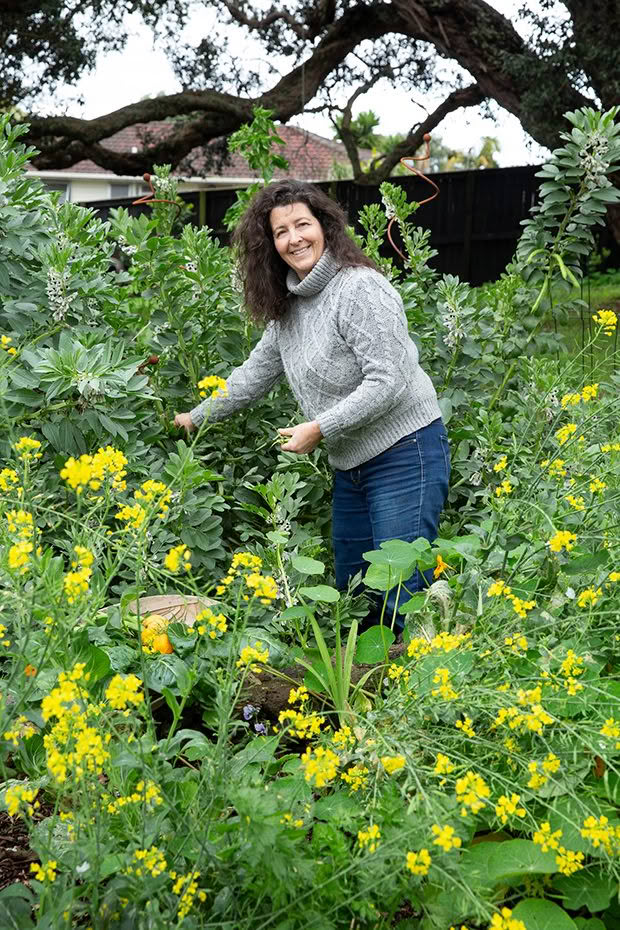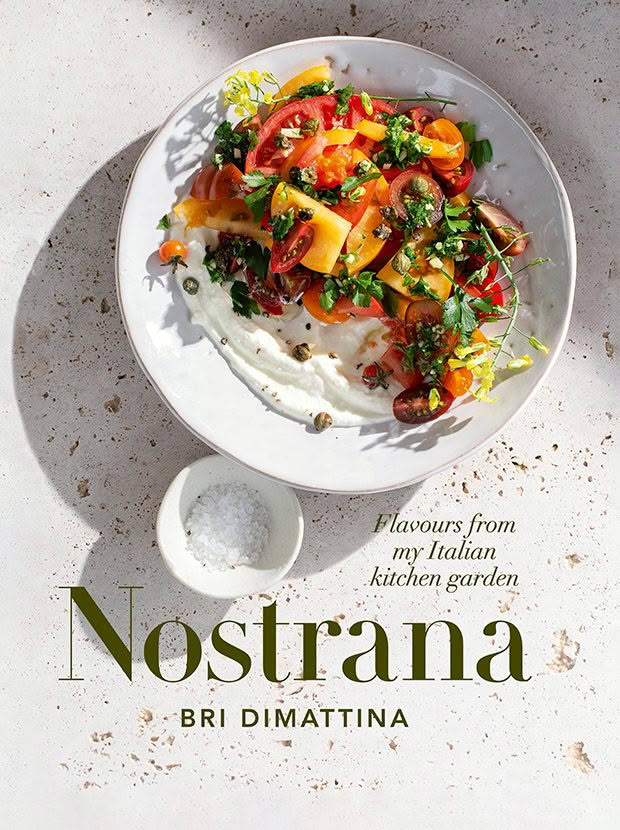How Nostrana author Bri DiMattina’s Italian heritage inspired her new cookbook

We ask home gardener and trained chef Bri DiMattina about her colourful new cookbook.
Bri DiMattina is the proud cultivator of a food forest. All year round, this forest flourishes with delicious Italian-inspired produce. The permaculture fanatic and trained chef has penned Nostrana, a cookbook that draws directly from the flavours and colours of her garden. She is also behind the Instagram account I Ate My Garden. Bri chatted to thisNZlife about Nostrana, her Italian roots and the secrets to food forest success.
If you were going to sum up Nostrana in a few sentences how would you describe it?
Nostrana is stroll through my garden and kitchen, and the recipes inspired from them both. My food has an Italian–Kiwi flavour and celebrates the seasons over the course of a year in my garden.
What compelled you to write the book?
A book wasn’t actually on my radar until a publisher approached me, and then the idea just couldn’t be ignored. The kitchen and garden have always been so connected for me, just like my Italian grandparents’ kitchen and garden, so it seemed obvious that the book would explore this. Writing it was a wonderful way to spend my pandemic year.
What was the process in creating the book?
The process took well over a year, because capturing the garden required photographing every season as it happened. The most stressful part was hoping that the garden would emerge the way it usually did: it really does follow its own rhythm, which is never normally a problem, but if you have ever tried to put a garden on a schedule with a deadline, you suddenly realise that it’s not up to you at all!
You talk a lot about your Italian heritage in the book, how does that influence the types of vegetables you grow?
It influences me heavily. I choose to grow vegetables that I like to cook with but which aren’t always available or affordable in stores. Over the last few seasons, things like heirloom tomatoes and butterbeans have become disproportionately expensive, so the only way to recreate these favourite Italian recipes was to grow the ingredients myself. The same goes for ricotta. Fresh homemade ricotta is nothing like the store-bought options in New Zealand.
What part of New Zealand is your garden?
I’m in Māngere Bridge, South Auckland, where I’m blessed with wonderful volcanic soil, albeit very rocky.
Can you explain the principles of a food forest (in a nutshell)?
I used to grow food seasonally and had these huge harvests every autumn, where I would make jams, preserved fruits and chutneys that would often still be in the pantry the following year. In summer too, I would spend the best days of the year holed up in the kitchen, preserving. So I swapped to a system where I would grow only a little and often. I planted perennials and vegetables and fruit trees to layer my harvests throughout the year, meaning I would graze on fresh produce throughout the year. I let a lot of things self-seed and come up when they like, like a self-perpetuating garden to some extent. I have very few ‘gaps’ in my year and a far more even spread of fruit and vegetables. This may not be the true definition of a food forest, but it does provide like one.
How does a Italian food forest differ from a “regular” food forest?
It’s all in the choices of plants. I grow eggplants, artichokes and a variety of beans – Borlotti and butterbeans. You can create a food forest with any sort of underlying theme, so I’m not sure there is such a thing as a regular food forest. But growing the foods you enjoy to eat really helps sustain your gardening interest levels.
What did you learn from your mum from her time at Eliza’s Pantry?
Lots! In the school holidays I always had a job in her café or catering events. Many of the recipes from there I still make today, and several made it into the book. Others remain family secrets for now. I remember my mother would buy directly from growers whenever she could, and she often chose produce herself rather than having it delivered so that she could see what was in season and freshest.
Do you have a recipe in the book that conjures up a significant memory with your mum or your grandparents?
If I had to pick one, it would be the Pizza Dolce. It’s a celebration torte, and so it often appeared at gatherings and is intrinsically woven into my memories of those events.
Do you have a cooking or gardening philosophy – or advice for beginners trying to grow and eat seasonally?
My best advice is just to start, and to start small. Pick one or two plants you would like to grow and get to know them, then slowly add them to the garden. I often recommend rhubarb or silverbeet as plants that are less fussy about care. I also recommend growing what you love to cook with. Learn as you go and swap with other gardeners, both information and seeds.

Nostrana by Bri DiMattina. HarperCollins NZ, RRP $55. Photography credit: Lottie Hedley.

